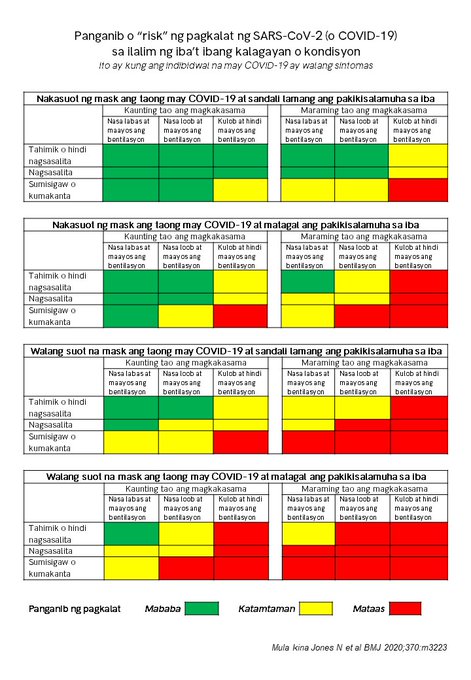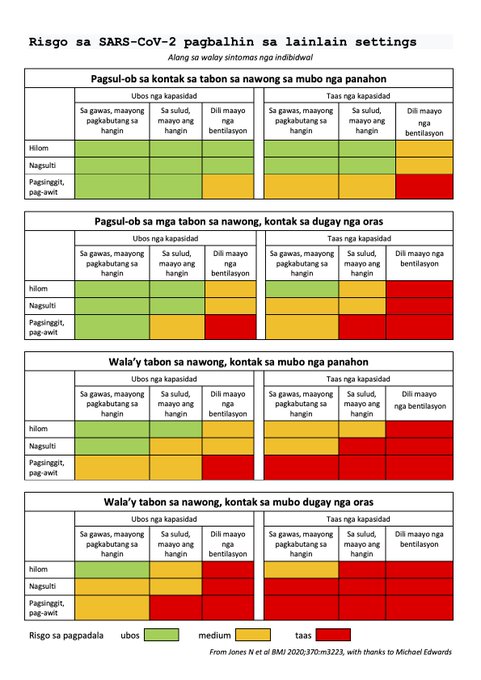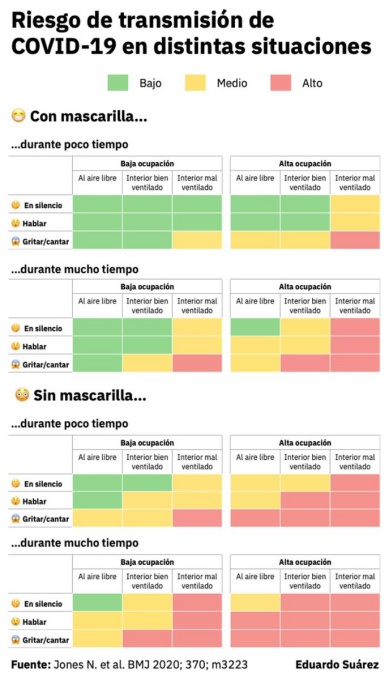When it comes to dealing with a global crisis such as the COVID-19 pandemic, communication plays a key role. From making official announcements to sharing health tips; from conducting research studies to launching vaccination campaigns, communication is truly important.
Of course, effective communication involves translating information into different languages. And while many people can speak English, there are certain terms that are best understood in our native tongues. In the case of the Philippines, we have Filipino, Cebuano, and other languages.
COVID-19 Risk Chart Gets Translated into Different Languages
Recently, a researcher posted a COVID-19 risk chart on Twitter, urging others to translate it into different languages. Trisha Greenhalgh is one of the researchers who conducted a study, titled, “Ten Scientific Reasons in Support of Airborne Transmission of SARS-CoV-2,” Interkasyon reported.
“Here’s our #CovidRiskChart in South Asian and South American languages: I will post English first then other versions in this thread,” Greenhalgh tweeted. “Track me down if you want to translate this.”
Here’s our #CovidRiskChart in South Asian and South American languages: I will post English first then other versions in this thread. Track me down if you want to translate this. pic.twitter.com/6PQW1pkXe8
— Trisha Greenhalgh ? #CovidIsAirborne (@trishgreenhalgh) May 4, 2021
Soon, different translations of the chart were added to the thread, including Cebuano and Filipino (Tagalog) translations. The chart was also translated into other languages, such as Hindi, Punjabi, Malayalam, Nepali, Odia, Spanish, Portuguese, Arabic, Farsi, Tamil, Irish, and Kannada.

Image Credit: @trishgreenhalgh, @MichaelPaulEdw1 / Twitter
The main chart, titled, “Risk of SARS-CoV-2 Transmission in Different Settings,” presents certain scenarios that apply to persons who are infected with COVID-19, but do not display any symptoms or are “asymptomatic.”

Image Credit: @trishgreenhalgh, @MichaelPaulEdw1 / Twitter
According to the chart, the lowest risk of transmission happens when people wear face coverings, interact for short periods of time, and stay in well-ventilated places.
On the other hand, the highest risk of COVID-19 transmission takes place if people don’t wear face coverings, interact for a long time, and stay in areas where there is poor ventilation.

Image Credit: @trishgreenhalgh / Twitter
The study noted that there is a higher risk of transmission in places where people interact. The risk also tends to be higher indoors than outdoors, and asymptomatic patients account for the rapid spread of the virus globally. Ultimately, the study concludes that COVID-19 can spread and cause infections through the air.
“Although other routes can contribute, we believe that the airborne route is likely to be dominant,” the researchers stated. “The public health community should act accordingly and without further delay.”

Image Credit: @trishgreenhalgh / Twitter
Indeed, these are truly alarming findings that must be taken seriously. As much as we all want things to go back to the way they were, it appears that we will be dealing with the COVID-19 pandemic for quite some time. For now, the best we can do is to continue following health protocols, limiting our travel activities, wearing face masks, washing our hands frequently, and practicing social distancing.
